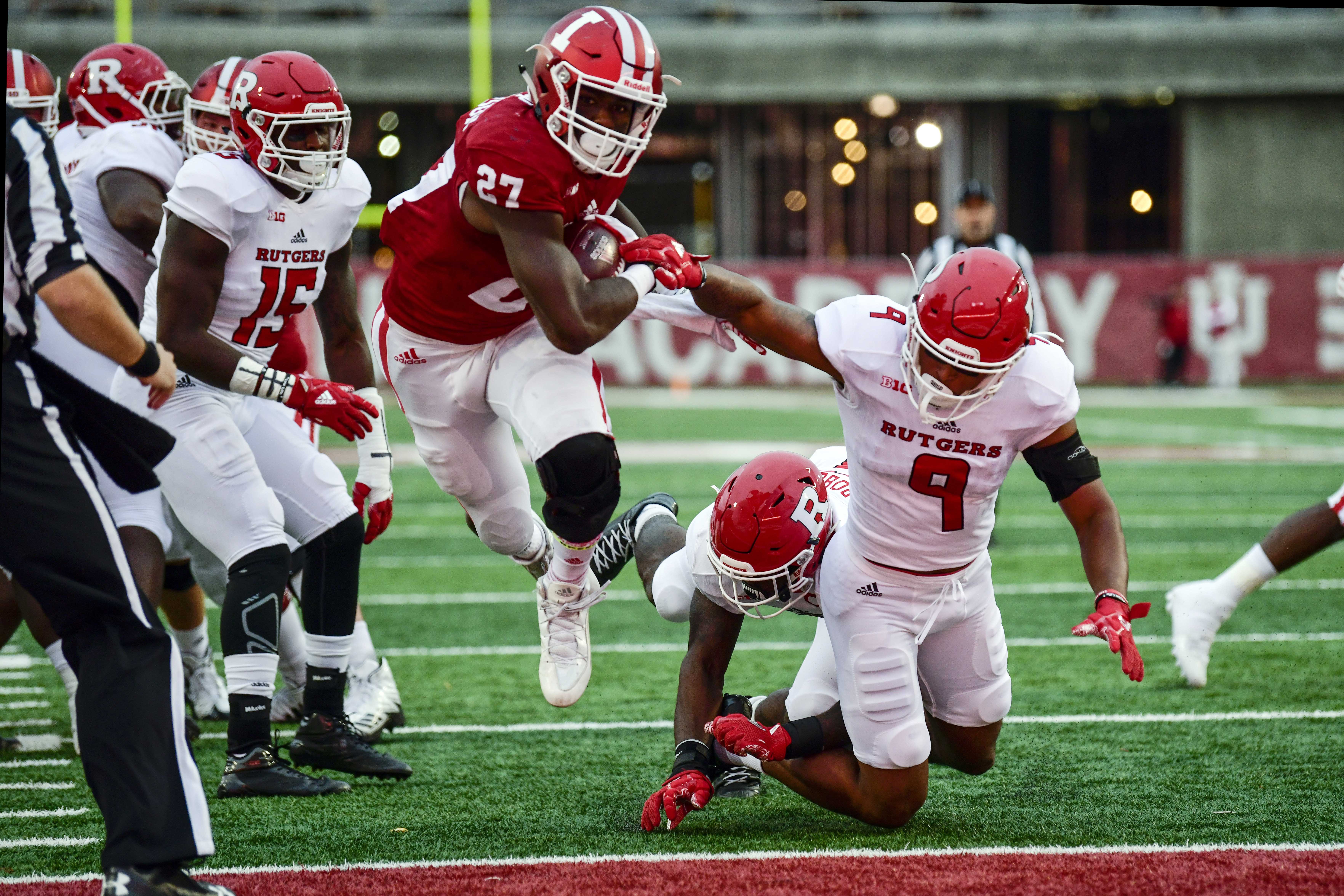Ad Disclosure

Indiana’s rushing attack struggled in 2017, but freshmen RBs provide a reason for optimism
A four-week stretch in the heart of the season essentially defined a disappointing year at Indiana.
From Oct. 14 through Nov. 4, the Hoosiers lost four straight games, falling to Michigan, Michigan State, Maryland and Wisconsin. Three of those losses came by a single possession. IU’s 45-17 loss to the Badgers was a touchdown game heading into the fourth quarter.
That month-long stretch was symbolic of Indiana football, coming so close but unable to have that “breakthrough” moment that Tom Allen preached about all summer. A team that had a realistic opportunity to win seven or eight games and earn a third straight bowl bid settled with a 5-7 mark and missed the postseason for the first time since 2014.
Maybe the results would have been a little different if Indiana was able to run the ball.
For the second straight season, the Hoosiers struggled to establish a presence on the ground, particularly against some of the better competition on its schedule. The four-week stretch from mid-October to early November was a microcosm of Indiana’s deficiency in the rushing attack.

The Hoosiers totaled just 287 yards in those four games, never once eclipsing the 100-yard mark. They averaged just 2.4 yards per carry and scored only one rushing touchdown. For as much flack as quarterback Richard Lagow received for his inconsistent play under center, Indiana’s inability to get a consistent push on the offensive line and develop a balanced attack was really the heart of the issue.
Entrusting freshmen Morgan Ellison and Cole Gest with a heavy workload so early in their careers may have been a little premature, even if the two were the team’s best options.
Indiana’s difficulties running the ball were reminiscent of a season ago. The Hoosiers endured a similar heartbreaking stretch in 2016, falling to Ohio State, Nebraska and Northwestern and failing to hit 100 yards in each of those three losses. But this year, the inability to set up the run was more costly.
This was the first time since 2013 Bloomington wasn’t home to a 1,000-yard rusher, and the first time a running back didn’t average 100 yards per game since 2012. Ellison was the leading back, averaging 64 yards per game in 11 outings.
The 130.1 yards per game (12th in the B1G) was the lowest team average in five seasons, too. Those are huge hurdles to clear in the B1G.
RELATED: Hoosiers 2018 Commit Named Indiana’s Mr. Football
Despite all the frustration that came with another season filled with those “woulda, coulda, shoulda” moments, there might be some reason for optimism moving forward. Even as stagnant as Indiana was running the ball throughout the season, there’s a bit of solace knowing the two primary ball carriers were rookies to the college game. And, at times, both had the look of seasoned veterans.
Ellison ripped apart Georgia Southern in the third game of the season, racking up 186 yards and a pair of touchdowns on 25 carries. In the second-to-last game of the season, he did the same to Rutgers. The freshman gashed the Scarlet Knights for 149 and two scores in a 41-0 victory.
Gest didn’t have quite the same success, but he also dominated Rutgers in late November, adding 104 yards and a score to the Hoosiers’ massive 267-yard rushing total. Throw in freshman quarterback Peyton Ramsey, who showed off his mobility throughout the season before an injury late in the year.
When it was all said and done, Gest tallied 428 yards and Ramsey added 226, all in addition to Ellison’s team-leading 704 yards and six touchdowns.
That’s quite a trifecta of rising talent.
Does that translate into instant success in 2018? Probably not.

Indiana is going to have to replace several prominent defensive pieces for next fall. And there’s still plenty of work to be done along the front lines and in the passing attack. It’s not as if the Hoosiers were a running back away from being a B1G title contender.
But they were a running back away — maybe another lineman, too — from reaching a third straight bowl game, maybe even that elusive eight-win mark. A more pronounced rushing attack would’ve helped in games against Michigan, Michigan State, Maryland and Purdue. The Hoosiers might’ve been able to sneak out two or three more wins if Ellison or Gest had a little more experience in the backfield.
Maybe Indiana would’ve had that “breakthrough” moment that Allen talked about throughout the entire offseason.
It didn’t happen this fall, and it probably won’t happen in 2018. But as the Hoosiers continue to implement a new offensive brand of football in Bloomington, Ellison and Gest have the potential to help Indiana restore its prominence as a dominant team on the ground. Ramsey’s mobility will provide IU with some much-needed wrinkles, as well.
As disappointing as the season was, and as gut-wrenching as the four-week stretch in October may have been, there is still some reason to be optimistic about the Hoosiers moving forward.
Ellison and Gest were just too young to get Indiana over the hump in 2017.
Dustin grew up in the heart of Big Ten country and has been in sports media since 2010. He has been covering Big Ten football since 2014. You can follow him on Twitter: @SchutteCFB